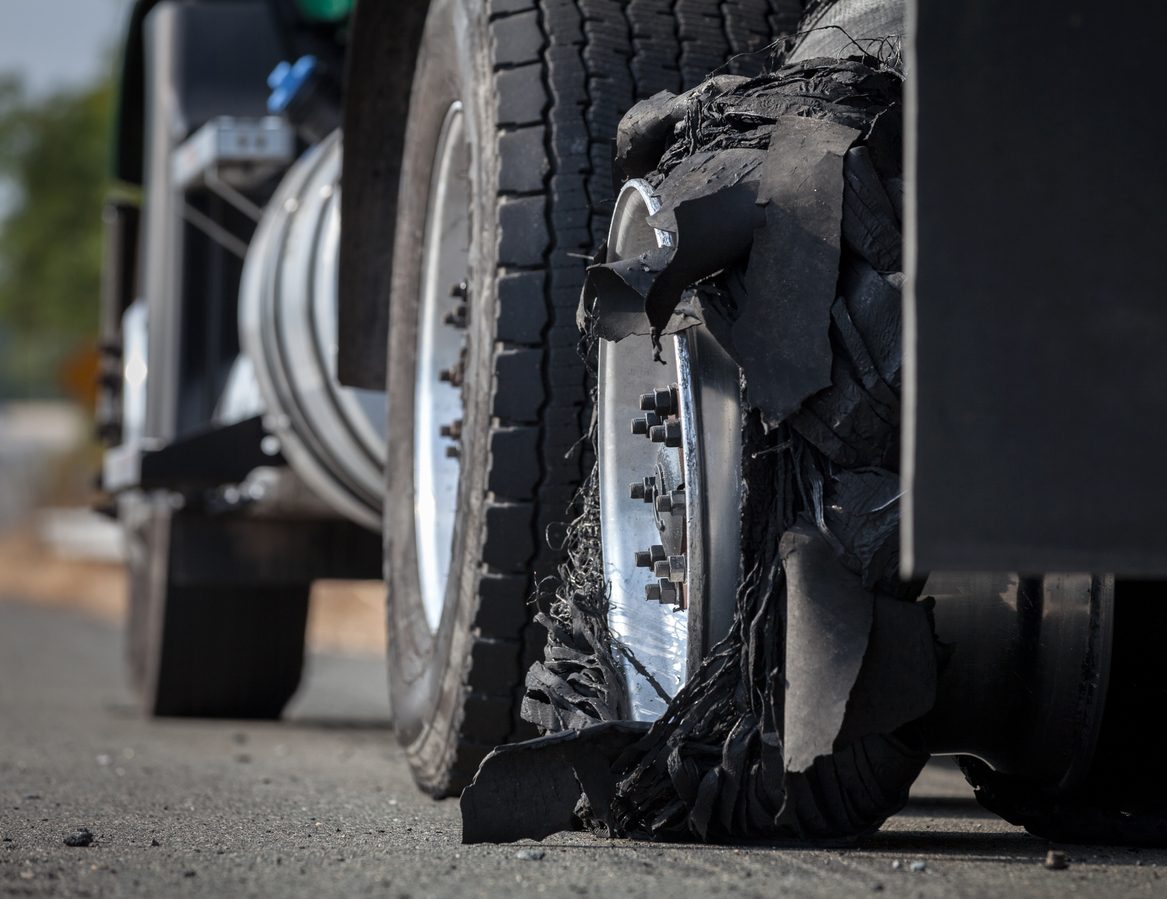
…and what to do when it happens
Tire blowouts can be scary to see while on the roadways, let alone experience first-hand. According to the National Highway Traffic Safety Administration, there were 738 motor vehicle traffic fatalities in 2017 in tire-related crashes.
Here are some steps you can take to make sure your tires are highway ready.
Monitor Your Tire Pressure
Incorrect tire pressure is one of the leading causes of blowouts. Your car’s TPMS continuously monitors the pressure of the tires, displaying a warning on your dash when they get too low. But while this system helps alert you to tire pressure issues, it cannot repair them. Many people ignore this warning when it comes up, which can lead to dangerous blowouts.
Listen to all dashboard indicators, and it’s also a good idea to manually check your tire pressure once a month with a tire pressure gauge – especially in extreme temperatures. Did you know that cold weather can cause the air in your tires to condense? This lowers the pressure. On the other hand, hot air causes it to expand, and your TPMS generally doesn’t alert you to over-filled tires.
Replace Worn Tires
According to U.S. News & World Report, all-season tires usually last between 50,000 to 70,000 miles or six to 10 years. Not sure if you need to change them out? The easiest way is to check the tread. If you see a deep tread, you’ve got good traction. When the depth of your tread reaches 4/32 of an inch, be on alert – you should replace your tires when it reaches 2/32 of an inch.
Try sticking a penny in the groove of your tire with Lincoln’s head down. If you are able to see Lincoln’s whole head, then it’s time to invest in new tires. Some tires have tread indicators, which are horizontal bars embedded in your tire that protrude 2/32 of an inch. When the rest of the tread has become level with the indicators, you should replace your tires.
Avoid Road Hazards
Road hazards, such as steep driveways and potholes, can also spur serious tire damage. In some cases, the impact from these obstacles is so severe that your tire will pop immediately. In other cases, the damage is done but goes unnoticed.
What to Do in a Blowout
- If you hear a loud pop before the car veers to the side, stay calm.
- Don’t follow your instincts and slam on the brakes, which can cause you to lose control of the vehicle. Grip the wheel tightly, holding it straight.
- Lightly press the gas pedal to maintain forward momentum.
- Once you regain control, ease off the gas and allow the car to slow down on its own. Apply the brakes once you hit about 30 MPH.
- Turn on your hazards as your car begins to decelerate.
- Work your way to the shoulder.
- Call I&I Tires. Our mobile tire shop will be on the scene quickly.
Contact I&I Tires
To learn more about how our 24-hour mobile tire shop can help in these instances, contact us in Atlanta or Smyrna today. Please note: we do NOT have a physical location; we are a mobile tire service only.
